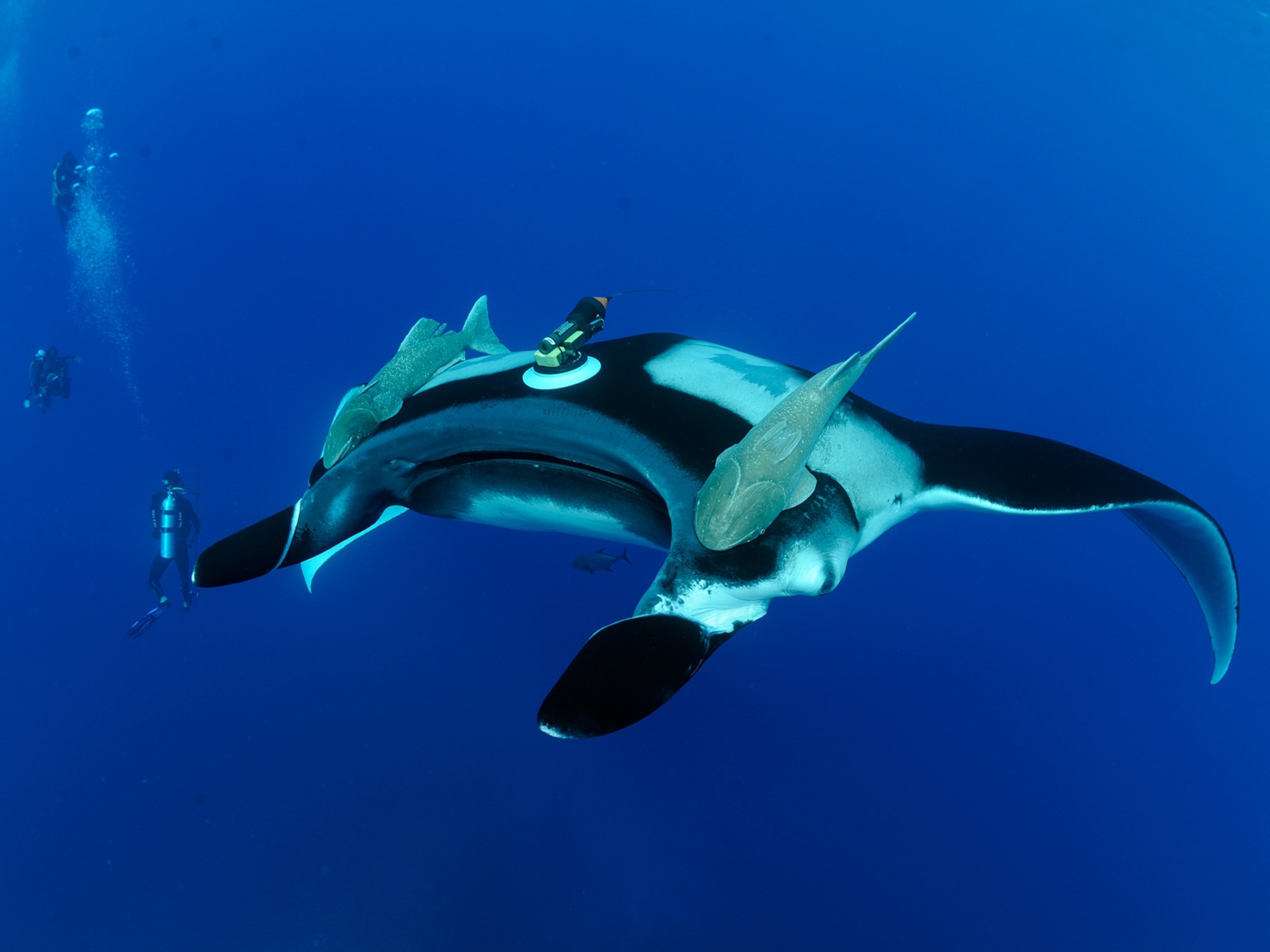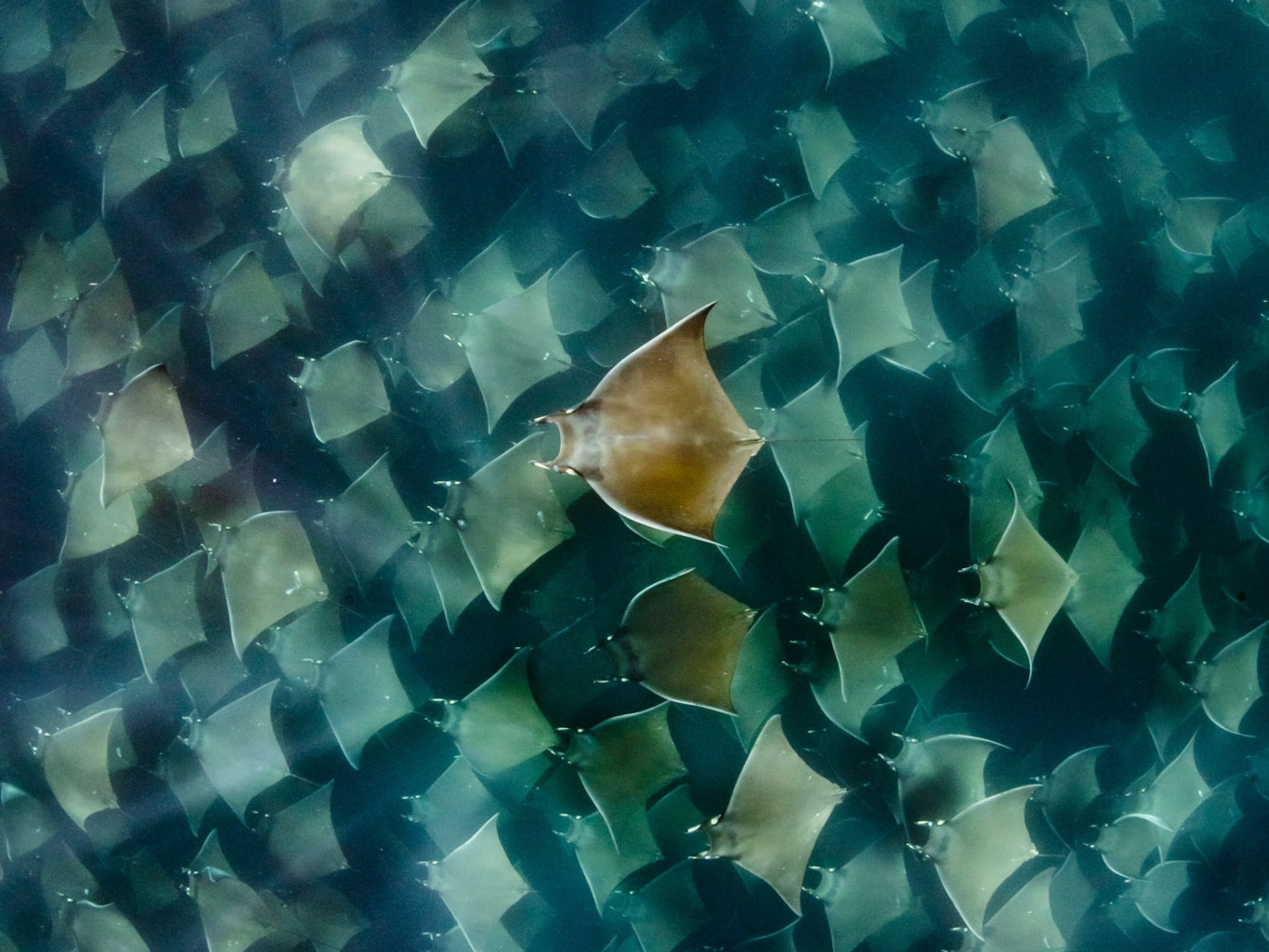Photographer Kristian Laine was freediving recently off the southernmost island of Australia’s Great Barrier Reef when a bright pink manta ray glided by. He thought for sure that his camera was malfunctioning.
“I had no idea there were pink mantas in the world, so I was confused and thought my strobes were broken or doing something weird,” says Laine, whose photographs posted on Instagram this week have gone viral. Laine later realized he’d spotted an 11-foot male reef manta ray named after Inspector Clouseau, the bumbling detective of the Pink Panther movies. The fish, who cruises the waters around Lady Elliot Island, is the only known pink manta ray in the world.
First spotted in 2015, Inspector Clouseau has been seen fewer than 10 times since. “I feel humbled and extremely lucky,” says Laine, who photographed him amid a group of seven other males, all of them vying for a female. (Read how manta rays form close friendships, shattering misconceptions.)
Scientists with the Australian research group Project Manta, who study the rosy ray, have confirmed its color to be real. At first, they theorized Inspector Clouseau’s color was the result of a skin infection or diet, similar to how pink flamingos get their color from eating tiny crustaceans. But in 2016, Project Manta researcher Amelia Armstrong took a small skin biopsy from the famous animal, and their resulting analyses ruled out diet and infection as the cause.
Now, Project Manta’s leading theory is that the manta has a genetic mutation in its expression of melanin, or pigment, says Asia Armstrong, a research assistant for the group.
And the ray is not just a cool-looking animal—it could contribute to science, she adds by email. “Understanding the origin of this genetic mutation may help inform us” about how color evolved in mantas, she says.
Tickled pink

Solomon David, an aquatic ecologist at Louisiana’s Nicholls State University, suspects the mutation is a condition called erythrism, which causes an animal’s skin pigmentation to be reddish, or in some cases, pink. Other more well-known genetic mutations to an animal’s pigment can make them melanistic (black) or albino (white).
“Having seen other pigmentation-related mutations in fishes, it’s not completely unexpected that this exists, but it’s really cool to see regardless,” Solomon says by email. (Go inside the underwater world of manta rays with a National Geographic photographer.)
Guy Stevens, CEO and co-founder of the U.K.-based Manta Trust, agrees that erythrism is the most plausible explanation.
Reef mantas typically come in three color patterns: All-black, all-white, or black-and-white. The latter, which is most common, features a pattern called countershading, in which the fish has a black back and a white belly. When viewed from above, their dark backs blend in with the darker water below, and when viewed from below, their light bellies blend into the sunlit surface—a configuration generally thought to offer protection from predators, such as sharks.
Even so, Stevens thinks the manta’s atypical color shouldn’t impact its survival or vulnerability to predation. That’s mostly because of the reef manta's massive size; an adult can easily weigh more than a ton. (Learn why manta rays swim in mesmerizing circles.)
“They are big when they are born, and they grow quite quickly in their first few years to make them large enough that only the biggest of marine predators prey on them.”
“It just goes to show—nature will always surprise you,” he adds. “Now the search is on for a blue manta.”







